
All SEO’s understand the value of optimizing for high search volume, non-branded terms that can drive a ton of traffic to your site. While these terms should always have a place in your overall SEO strategy, you can’t neglect the branded search potential that your business generates from your other marketing efforts.
For a lot of businesses, branded searches can make up the majority of their organic traffic. These people searching specifically for your brand are usually deep in the sales funnel, and are more likely to convert. A study in 2012 found that compared to non-branded keywords, branded keywords have over 2x higher the conversion rate. In this article, we have laid out 3 strategies to help you capture and close more customers at the moment they’re most ready to take action. Your online and offline marketing efforts have all led to this point, now it’s time to seal the deal.
3 Ways to Improve Results
1. Brand Descriptive Anchor Text
First things first, you need to make sure you are ranking for your own brand name. In a world when almost every word in the English language has been trademarked, it can be difficult to A) find a business name and B) compete on search engines with all the other organizations or people out there with a similar name. Even a coined name can have stiff competition. This is where brand descriptive anchor text becomes quite important when looking at your external links, or lack there of.
What is anchor you ask? Anchor text is the visible, clickable text in a link. Google uses anchor text as an additional way to determine what the content on the end of the link is about.
Nixon, a watch company out of California, is a good example of how important descriptive anchor text can be when competing for your brand name on Google. Richard Nixon, the 37th president of the United States, was quite the hurdle to jump over to reach the #1 position. The search “Nixon”, which currently has over 100,000 searches a month, used to be taken by the ex-president.
Ouch! That would not be cool to have the only US president to resign from office rank in front of you for your brand name. The team at Nixon were surely not too excited about this either, and wanted to change this ASAP. They’d be helped in this effort by launching a link building campaign with an emphasis on brand descriptive anchor text, that needed to come in the form of Nixon or something similar, like Nixon Watches. No “click here” vagueness. This would help google make out the difference between the two very different things.
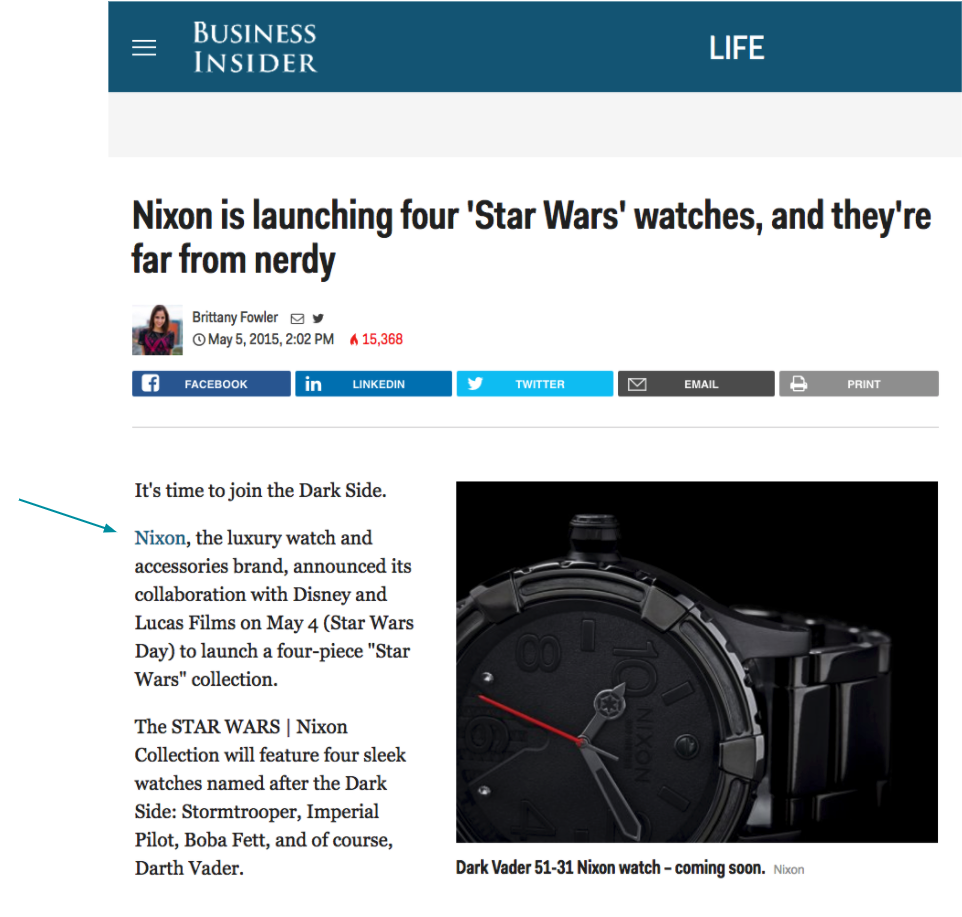
Google was at one point able to conclude that the searchers intent behind the search “nixon” MUST be referring to the watch company, and not Richard Nixon, who usually gets referred to by his full name. Above, you can see an example of a powerful link from Business Insider pointing to Nixon’s website with the anchor text “Nixon”. Links like this ended up making the difference.
Current Situation: Nixon #1, Richard Nixon #2. And thousands of dollars of more watches sold.
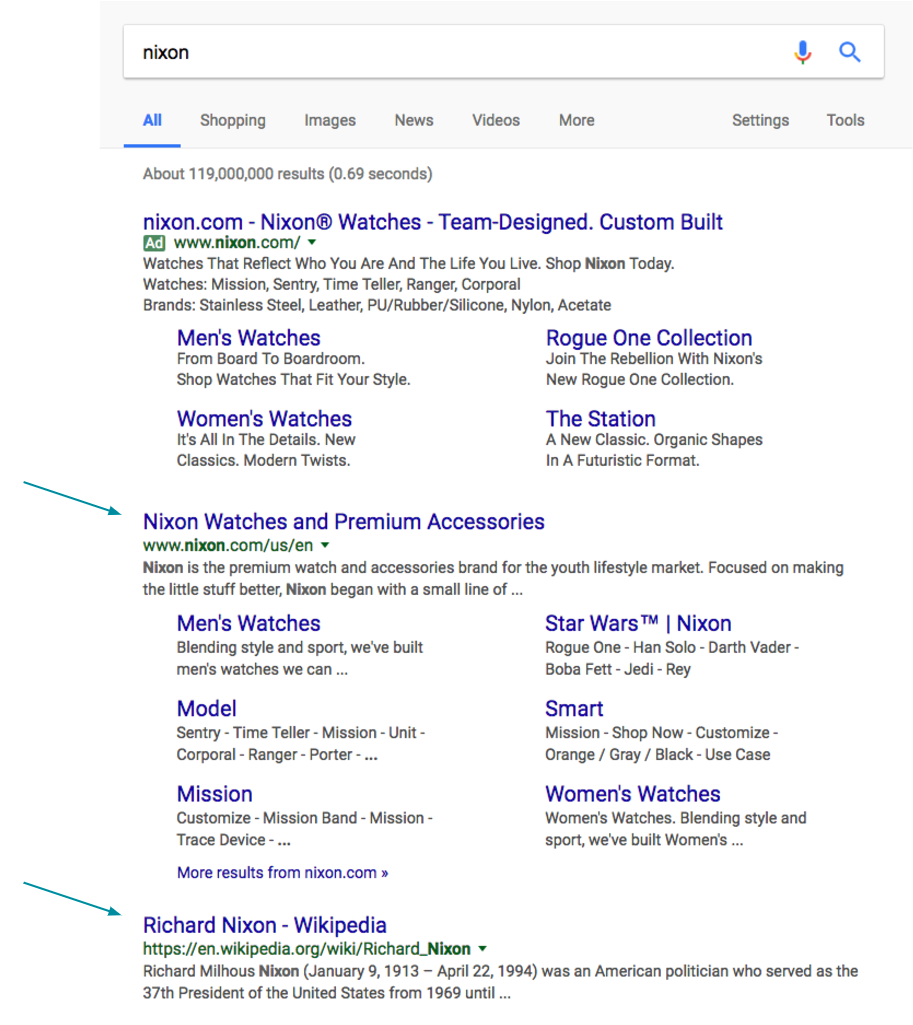
*Something to note. SERP’s are constantly changing for keywords and are personalized on a number of different measures. Don’t be surprised if you perform the same search and come up with slightly different results. Okay, you have been briefed.
2. Serve up the Right Content
Once you’re ranking in the first position for your brand, the second thing you need to consider is what pages are actually showing up for the variety of brand searches you are generating. Different pages of your site have different content geared for different audiences and visitors, think about relevance and how the search can be met with the most relevant material.
For a simple brand name search, this is typically the homepage. For someone looking specifically for one of your products or services, a deeper page should be showing up. Your title tags, meta descriptions, and page copy should all be written in a way that helps Google match up the intent of the searcher with your site’s content. You and Google are on the same team, both trying to serve the searcher in the best way possible.
Below, imagine a San Diego beer connoisseur researching IPA offerings from some local breweries. For Saint Archer, their homepage is showing up for a core product search. No bueno! Ballast Point, notorious for its delicious Sculpin IPA, has their liquid gold placed front and center.
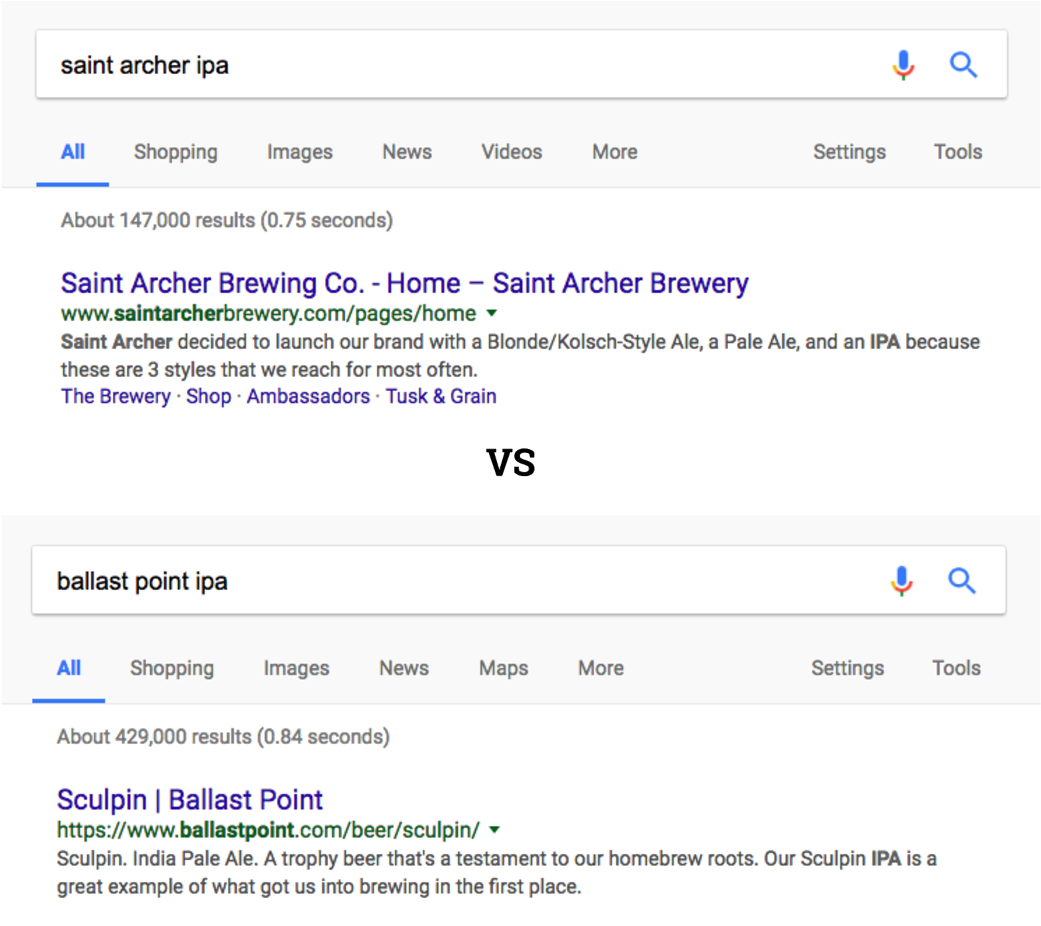
In order to fix the issues here, start by finding all the different ways people are searching for your brand and identify returning results that aren’t optimal. Prioritize by search volume and the searchers intent and remedy with some simple on-page optimization.
Rand Fishkin, the CEO and founder of Moz, sums it up well in his White Board Friday feature below:
3. Dominate the 1st Page
Now you’re feeling pretty good, you’re showing up for your brand AND the most relevant pages are showing up where they should be. Let’s go one step further, it’s time engage in complete SERP (Search Engine Results Page) domination.
A recent study shows that the top 5 results account for 68% of all clicks. Results from 6 to 10 are less important but we like the idea of owning the whole 1st page. Don’t you? Here’s how you do it…
Paid Search
Why are we talking about paid search in this article about SEO? SEO’s don’t want to pay for anything! We are right there with you, but if you want to own as much real estate on the first page as possible, it’s a must. Other brands could be bidding on your branded terms, dropping them right in front of everything you are already showing up for. It’s considered best practice to bid on your own brand terms because the CPC is cheap and it’s worth owning the extra real estate to ensure a click.

Sitelinks
Sitelinks are the 2-10 links that show up underneath your first organic result. Sitelinks are very important because they take up a lot of real estate on the SERP and basically function as a table of contents for your website. Google has the final say in whether or not it provides sitelinks, but you can help Google out by submitting an XML sitemap and having a website with a logical hierarchy. If pages are showing up that you don’t want under your result, you can easily demote them within your search console account.
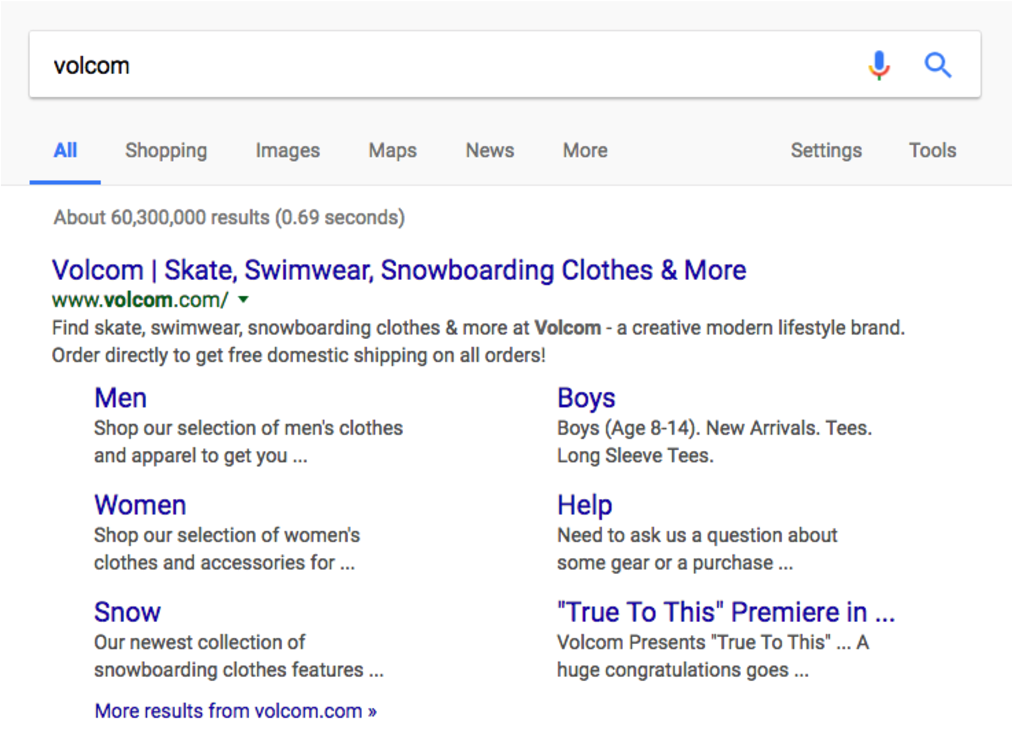
Search Box
Search boxes are pretty nifty. If you have an internal search function, then you have a solid chance of this showing up on google. If you have one, but it doesn’t seem to be showing up, you should create a simple piece of schema markup so search engines can identify it on your site. Search Engine Land has a great article about schema markup and shows how easy it can be to inject it into your HTML. There are other forms of schema you can target like reviews, events, and breadcrumbs that can also enhance your organic listings.
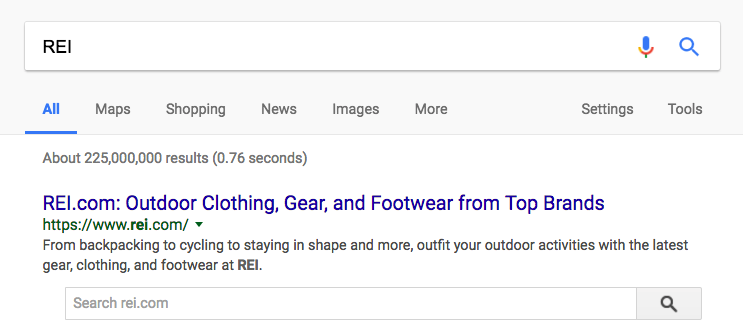
Knowledge Graph
Google introduced the knowledge graph back in 2012 in an attempt to help users discover information quicker and easier. Knowledge graph is showing more and more for businesses across the web. It’s definitely not out of reach if you are a smaller or newer brand. All it takes is some simple schema markup and you could make it into that fancy box. A lot of times, businesses have a knowledge graph already populating but there is usually room for improvement. Google pulls information automatically from your site and can miss things if you don’t make the information easy and well formatted for machine consumption. You want to make sure that you have all your social channels, a solid description of your business, reviews, and accurate contact information, etc.
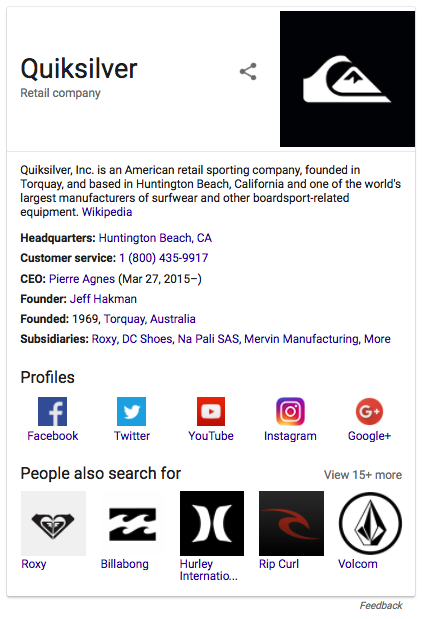
Map Results
If your business has a brick and mortar location, you should make sure map results are showing up when people search for you. To do this, you need to make sure your business is registered through Google My Business so google can access and display your map listing with the correct information.
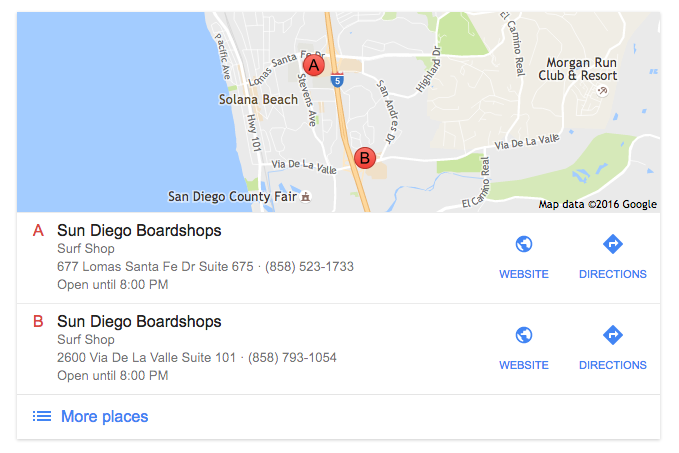
Barnacle SEO
Now let’s talk about how to steal the rest of page 1. You can claim this space by latching onto social media giants like Facebook, Instagram, and Twitter thus the term “barnacle”. Creating a Wikipedia page and and active YouTube account are also good ideas. Creating these accounts and being active on these channels will give you the potential of having page 1 all to yourself! Having all owned channels in the results means less people are diverted to retailers that will reduce your margins. It also gives you more control of how your brand is being portrayed online. Titleist has done a great good job of owning page 1 below.
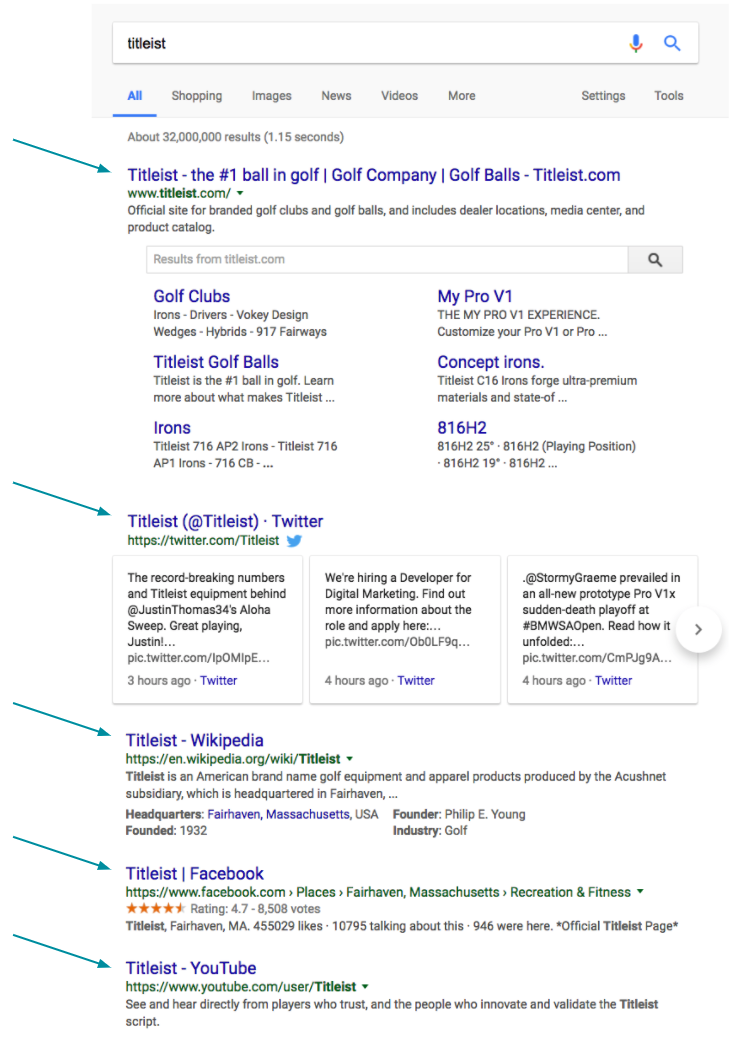
In closing…
Branded searches are EXTREMELY important and can’t be overlooked. It can often be a last channel touch point for consumers who are about ready to take action. Optimal results not only help you seal the deal in that moment of action, but it will make your brand stand out as the true leader it is.
